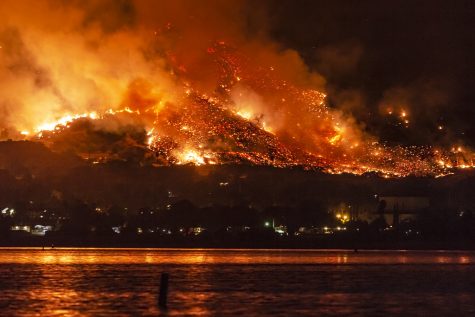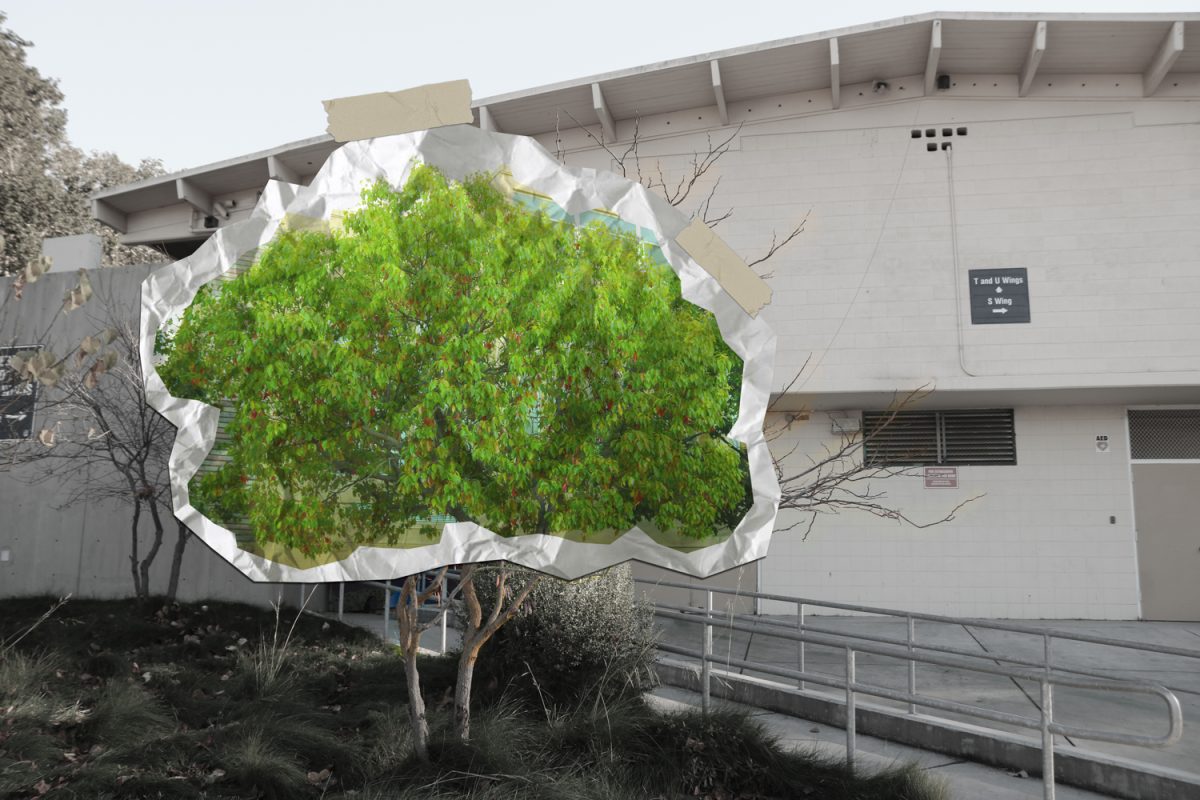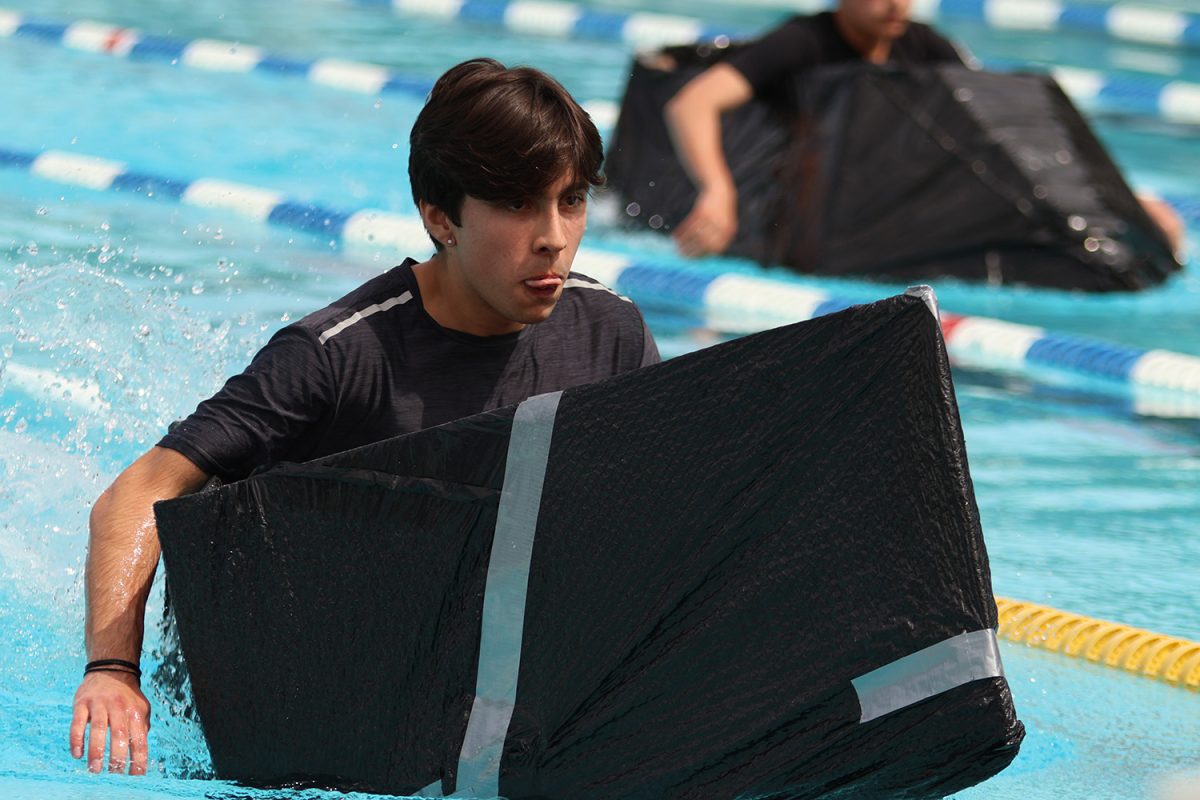Brian Cyr was 19 years old and broke, looking for a job to hold him through the summer until college reopened in the fall. He chose to be a firefighter, which he thought would be a nice, temporary job. Now 48 years old, Cyr is the Battalion Chief for the Sonoma Fire Department.
Over three decades of service, Cyr has seen constant changes in the fire department. How the 48-hour shifts have slowly become 60 to 70 hours during the summer. How the fire season seems to become longer and longer. How the mental health issues the firefighters face are finally being recognized.
But to understand the life of a California firefighter during fire season, one needs to first understand the day-to-day life of a firefighter.
Day To Day Life
For most Americans, the average job is usually a 9-5 every weekday, providing ample opportunity to get good sleep and enjoy time with family and friends. This is not the case for firefighters. Firefighters typically work 48-hour shifts two days a week and take the rest of the week off.
When Cyr first joined the force, people often worked for the summer and got laid off in winter. Getting to October was considered lucky. Perfect for a college student like him. In the present day, this has completely changed.
“Now it’s nine to 10 months long […] Since I was 19 years old, I couldn’t wait for fire season. The last few years around May it starts getting hot and my shoulders drop and I don’t really know that I wanted to do this again,” Cyr said.
The average shift starts at 7:30 a.m., where firefighters listen to a status report from the previous night. If there is anything that the firefighters need to know for the day, such as if any equipment was broken, it is detailed in the status report.
Next is inspection. Firefighters inspect each fire engine, truck, and ambulance individually. They check if the valves are correct, if the water pump works, and if the drugs necessary to save someone’s life are in the ambulance.
From 8:30 to 10 a.m. are workouts. Being a firefighter requires peak physical conditioning, and only the most able-bodied can take on the challenge.
“We have a couple of college athletes that had degrees in kinesiology, some were personal trainers at one point a couple, some are Olympic level athletes […] So we actually have, you know, detailed workouts that we’ll end up doing every day,” Cyr said.
Then throughout the day, firefighters train for almost any situation imaginable. While they may be called firefighters, 90% of the job is responding to medical emergencies. So not only are firefighters trained on how to contain fires, but they also have to respond to car accidents, water rescue, and even animal rescue.
One of the newer jobs that firefighters have to do is fire prevention. A lot of the wildfires that torch California every year are exacerbated by the overgrowth of vegetation. Departments go through every single business and multifamily residence, looking for any hazards or overgrowth.
This is all during 48 hours. Forty-eight hours away from families, home, and your life outside of work. There are even beds in the station for firefighters to sleep during their shifts.
Naturally, when they spend so long with their coworkers dealing with such serious issues, they have to try and form some sort of bond with each other. Whether playing basketball, cooking food, or just talking baseball, firefighters do anything to keep themselves in good spirits.
“I’m an A’s fan, I’m one of the rare ones. It’s a really bad idea to be one,” Cyr said.
At a certain point, these are no longer colleagues. These are brothers and sisters and people they would give their lives to protect at a moment’s notice. They see each other during their highest moments after a successful rescue and their darkest points like a rough call.
“If you’ve really had some really bad rough calls during the day, you want to get people’s minds off of that. And so I think that downtime is still super important,” Cyr said.
Mental Health
Over the last decade, one of the biggest developments in society has been recognizing mental illness, and how mental health is just as important as physical health. This is especially true with such a demanding job like firefighting.
Fighting fires is an inherently mentally taxing job. Working 48 hours shifts minimum away from home, laboring in often life-or-death situations where the wrong choice could end with catastrophic effects.
The firefighters rarely acknowledged mental health in Cyr’s department. After all, many were Vietnam veterans who joined the department when World War II veterans were still working. This led to a cycle of not opening up about the traumatic experiences and internalizing the hardships fighters went through.
However, progress is finally being made on this front. Firefighters are opening up to each other about the hard times they go through, and there are even organizations being set up to help traumatized first responders as a whole.
One of these groups leading the charge is First Responders Resiliency Inc. created by Susan Farren.
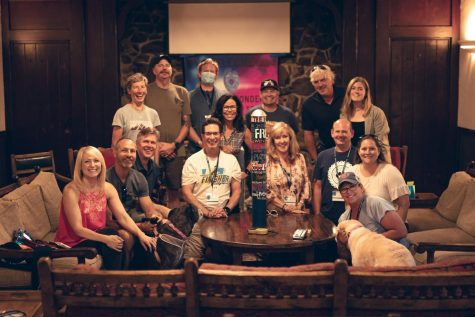
Farren began the organization after a life-threatening bout with terminal kidney cancer. Within two weeks of this diagnosis, she finalized her divorce from her husband. During these trying times, she began to research organ cancer trends with first responders, which taught her about PTSD and its symptoms.
She learned that PTSD was common among all first responders even though first responders aren’t given proper treatment until they are sick. This gave Farren an idea. Why not teach first responders about their mental health rather than trying to medicate them before it is too late?
Farren and her organization educate first responders on how their nervous system works and the science behind trauma and stress. They then give healthy exercises to help cope with the trauma that first responders face. This can be simple things such as breathing exercises or even exposing them to concepts such as mindfulness and meditation. The point is to find healthy ways for first responders to cope with PTSD.
“What we invite people to do is to learn those techniques without having to use substances or chemicals to change it,” Farren said.
As alluded to in her statement, many first responders can dive into substances rather than therapy. This can prove to be harmful and doesn’t fix the underlying mental issues the first responders face. They often become addicted to these substances, which they use to cope, making their situation even worse.
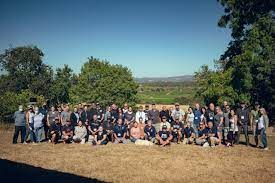
“I worked with a firefighter who was an opiate addict,” Farren said. “He had struggled with addiction for 11 years. And he just came to the end of himself and his department reached out to us. And after he went through treatment and recovery, he was able to start working with us. And for the first time in 11 years, he’s been sober for nine months.”
There is always a way out of a dark place. Whether it be through support from friends and family, meditation, or therapy.
“Post traumatic stress is not a disorder; it’s an injury that can be prevented, and it can also be repaired,” Farren said.
Wildfires
When Californians today think of firefighters, they picture them battling raging wildfires that come every fall. When the average Californian smells smoke, they know to expect power cuts, orange skies, and even days off from school. However, this signals time away from family and friends for firefighters to battle these fires.
The regular 48-hour shifts turn to 50-hour shifts, and the 50-hour shifts turn to 60. It is exhaustive work and often feels hopeless, especially when containing a fire near a big city.
“I remember I used to always talk to these guys from when I was 19 years old and they were like, ‘Yeah, man I once went for like 40 hours straight.’ It was crazy. And now it’s been every year that we’re doing it several times a year now,” Cyr said. “This summer, I’ve already been gone for 32 days.”
For Cyr, this has affected his relationship with his kids the most. He has a sophomore and senior in high school to take care of, and he can’t be there as much anymore because of these fires.
“It’s changed so much in the last few years because I used to be gone for two weeks and then I’d be home, and I can take a vacation and make up for it. Now, I can’t really take that vacation time in the summer because everybody else that would be working for me when I’m gone is gone on these fires,” Cyr said.
However, fighting these fires is only a temporary fix. To shorten the fire season, California must acknowledge the underlying causes of these fires.
California has become notorious for its droughts, which have only worsened due to global warming. However, there are a lot of minor issues with California that make these droughts more likely to occur, which was pointed out by Carlmont’s AP Environmental Science Teacher Michael O’Neall.
“There are so many factors from so many points of view that it’s hard to pin the California droughts on any one major cause. While global warming definitely plays a part in changing weather patterns, it also comes down to infrastructure of our water systems and how we use that water throughout the state,” O’Neall said.
It is also important to note the overgrowth of vegetation that can spread fires rapidly when they catch fire. The solution to this has been controlled burning, which can help get rid of overgrowth before they help spread a fire.
“While California has been consistently working on combating global warming, we need to make sure we also focus on preventing causes of these fires like poorly maintained power lines and preventing the intensity through forestry practices such as controlled burns,” O’Neall said.
Many people make the mistake of trying to simplify the wildfires in California to one root cause. While some say that it is because of climate change, others say identify faulty infrastructure as the cause. However, the reality is that all of these answers are correct. The fires in California are a multifaceted issue, and there is no one perfect solution to stopping them.
“I try to keep politically right in the middle. I really think that a lot of your answers are in the middle of everything. And you look at both sides of the argument on why is California burning so much every year. And you can either have climate change, or you have forest management. And I want to be able to grab both groups, and just say, like, yes, and yes. You’re both right,” Cyr said.
Advice for Future Firefighters
Firefighting is one of the most demanding jobs one can take on. It takes mental and physical toughness, and the job will only get tougher with fire seasons getting longer.
Cyr has seen the position evolve and has learned a lot along the way, and has a lot of insight for those who want to take on the firefighting challenge. However, there is one piece of evidence that Cyr sees as more important than anything else.
“Oh man, please take care of your knees.”

